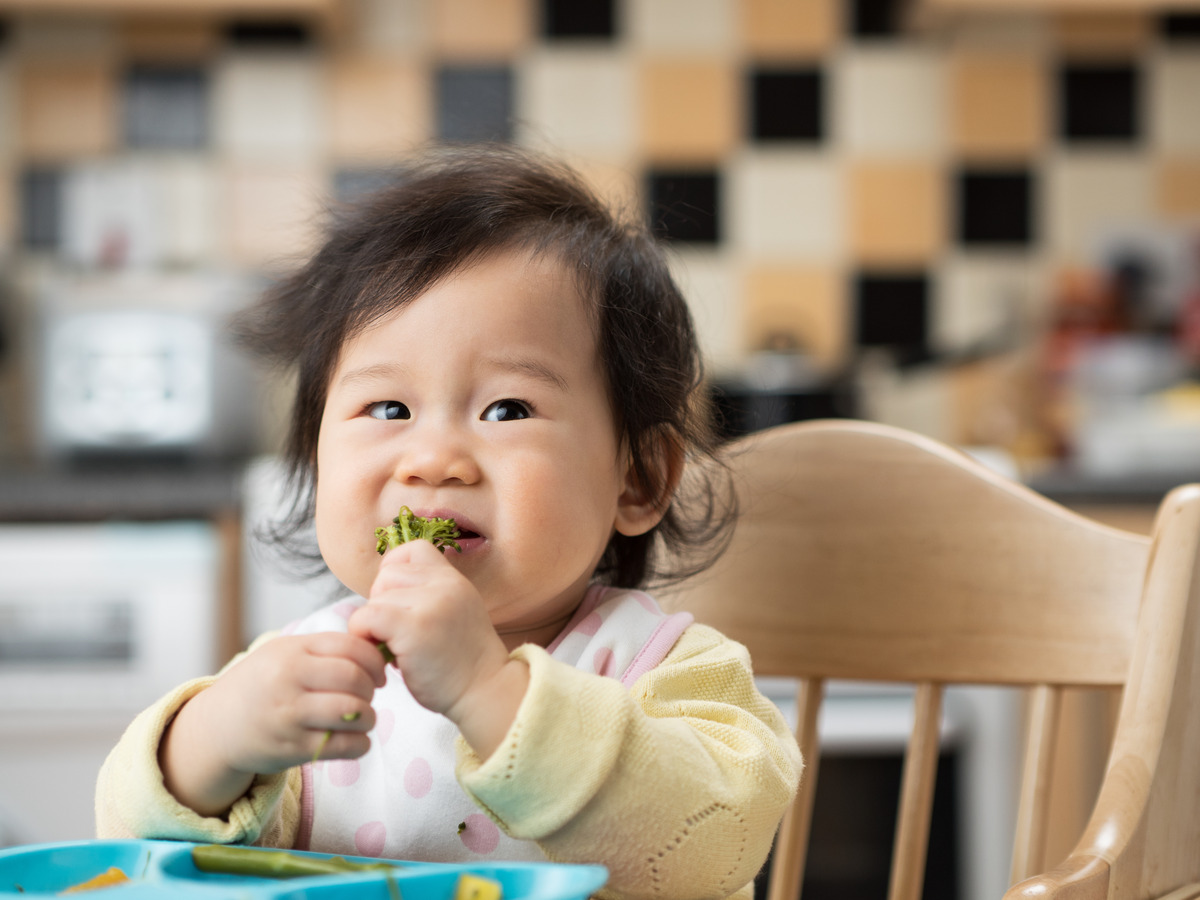
Popular Locations
- Yale New Haven Children's Hospital
- Yale New Haven Hospital - York Street Campus
- Yale New Haven Hospital - Saint Raphael Campus

Published March 29, 2023

A baby’s first food doesn’t have to come from a jar. Baby-led weaning flips the script on traditional spoon feeding with purees and instead allows baby to feed themselves with whole foods.
This approach may seem intimidating to parents at first, but baby-led weaning offers several benefits. It can be helpful in reducing picky eating by exposing babies to different textures, it helps with oral development and research shows it can reduce the risk of obesity because it promotes self-regulation and satiety cues.
Before parents start their baby-led weaning journey, parents need to learn the basics of feeding safety, says Yale New Haven Children’s Hospital pediatric dietitian Kristen Smaldone, MS, RD, CSP, CD-N. There is no increased choking risk associated with baby-led weaning when compared to traditional spoon feeding. However, a CPR class can empower parents to act in case of an emergency.
Parents should also learn the difference between gagging and choking. Gagging is a protective mechanism that protects food from going into the airway and when that happens babies are vocal, often making loud coughing noises. If a baby is choking, they are silent because they’re struggling to get air.
Next, parents should look for signs their baby is developmentally ready to feed themselves by being able to sit upright and support themselves. Babies should be well supported in their highchair with feet planted. Usually this happens when babies are around 6 months. Premature babies may reach this milestone at their corrected age.
Picking the appropriate first foods is also an important consideration for babies to eat safely. At around 6 months, babies can grab objects with their fist, so foods should be larger and easily mashable. Some examples include:
As babies get older, they use a pincer grasp and can pick up smaller pieces of food.
The top nine food allergens are milk, egg, soy, wheat, peanuts, tree nuts, fish, shellfish and sesame. In general, it’s best to introduce those foods separately.
Dedicate one week for each allergen and offer it three times that week, which will allow parents to know if that food is causing a reaction. Once safely introduced, keep including those allergens alongside other new foods. Parents can be more liberal with fruits, vegetables, meats, and certain grains like oats and rice.
“In the allergy world, our goal is to diversify the diet as quickly as possible under one, so if families feel comfortable with a new fruit every day, or a new vegetable every day, that’s perfectly OK,” said Julia Shook Munoz, MS, RD, CDN, a clinical dietitian specializing in food allergies.
Munoz says the recommendations for introducing allergens has changed tremendously over the last decade or so. In the past parents were advised to wait until their child was 3. Now, experts recommend introducing allergens early and often.
Some foods that should not be given to babies are round foods that can cause a choking hazard like whole grapes, hard foods, globs of sticky foods like peanut butter and honey due to the risk of botulism. While added salt and sugar should be avoided, herbs, spices and oils can entice babies to try new foods and are good for them too.
“You want to cook with oils because most fruits and vegetables are low in calories, so we want to add fat to maximize our fat-soluble vitamins,” Smaldone said. “Also adding calories and fat is crucial for brain development.”
Feeding can be stressful for parents and it’s easy to get overwhelmed, but Smaldone and Munoz encourage parents to try and feed their baby in a no-pressure, calm environment. If their child is not yet ready for baby-led weaning, that’s OK too! Parents can take a more adaptive approach that starts with purees, introducing other textures as their baby develops. While every baby learns at their own pace, keep an eye on their progress. If they are struggling to accept any new foods by around 9 months, they may benefit from an evaluation by a speech pathologist.